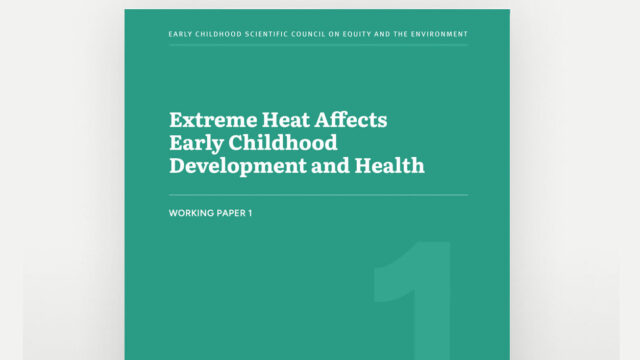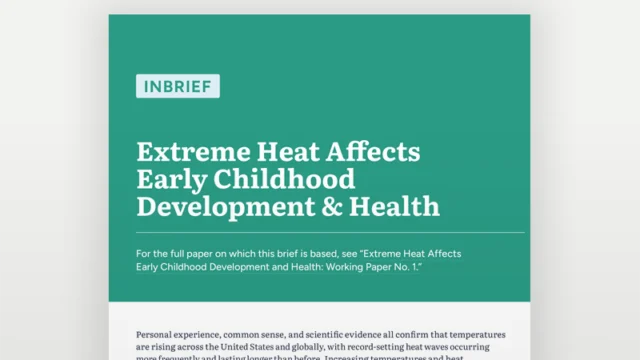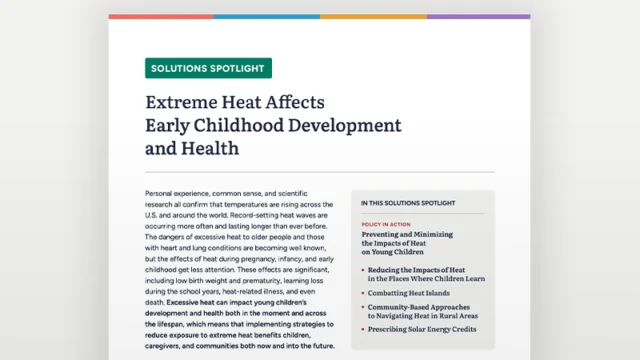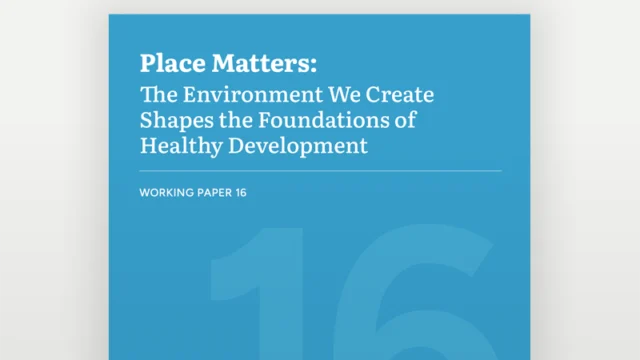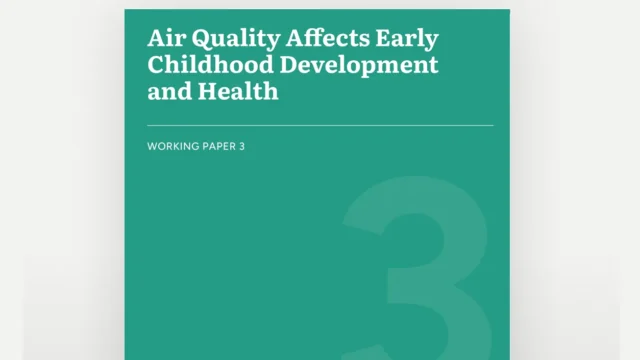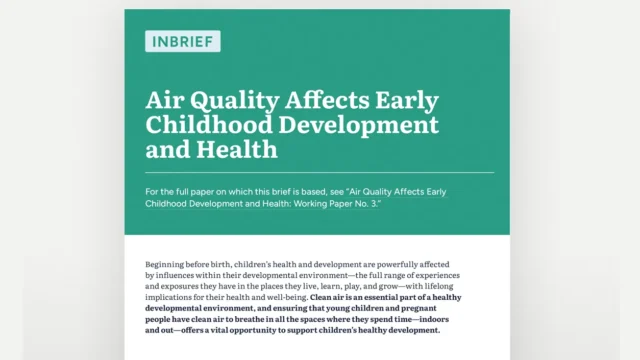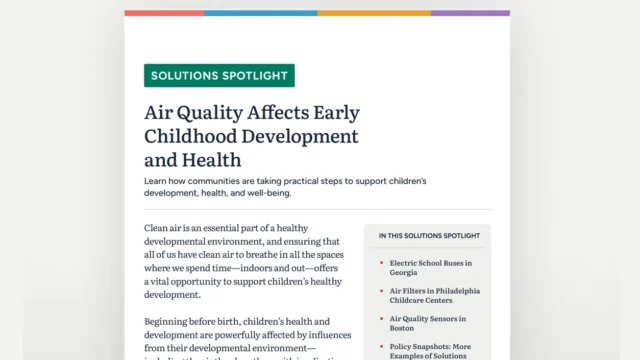A Guide to Extreme Heat and Early Childhood Development
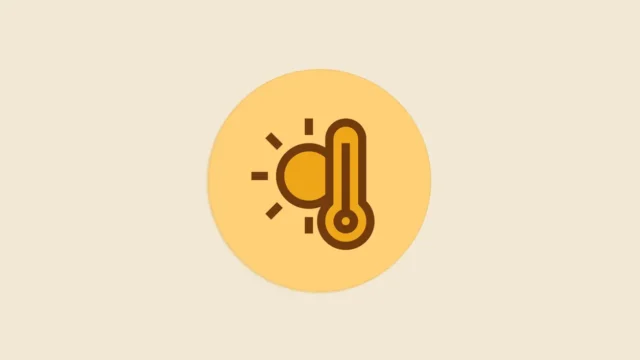
Personal experience, common sense, and science confirm that temperatures are rising globally. Heat waves are occurring with greater frequency and lasting longer than ever before, shaping children’s environments—and, therefore, their development—in new ways. Extreme heat affects infants and young children more than most adults because their smaller bodies heat up more quickly, and they have less capacity to release heat via sweating.
Practical, actionable solutions exist to protect pregnant people and children and prevent these impacts, and many communities, organizations, and nations have already begun implementing them to good effect. Explore the resources in this guide to learn more about these solutions and discover additional resources that offer information about the impact of extreme heat on early childhood health and well-being.
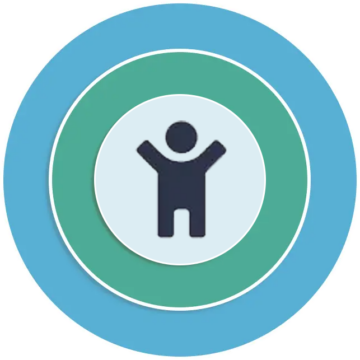 Developmental Environments
Developmental Environments
